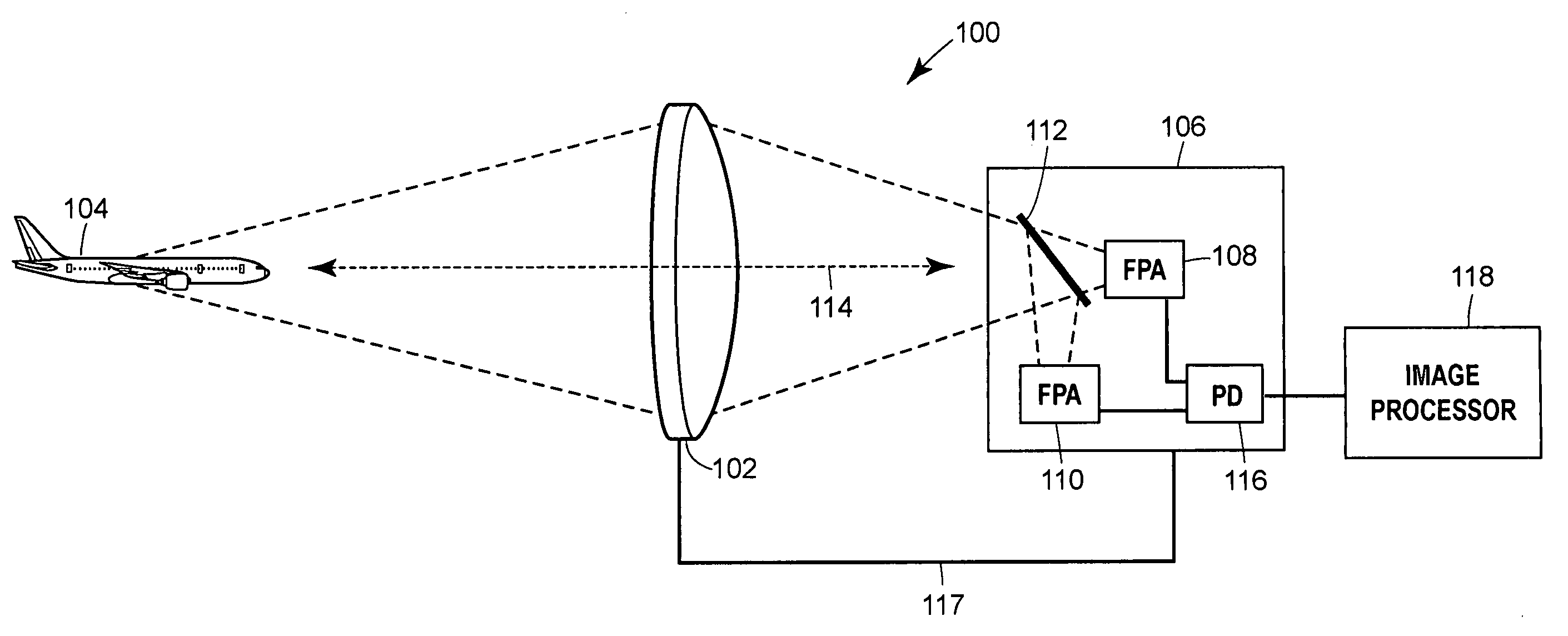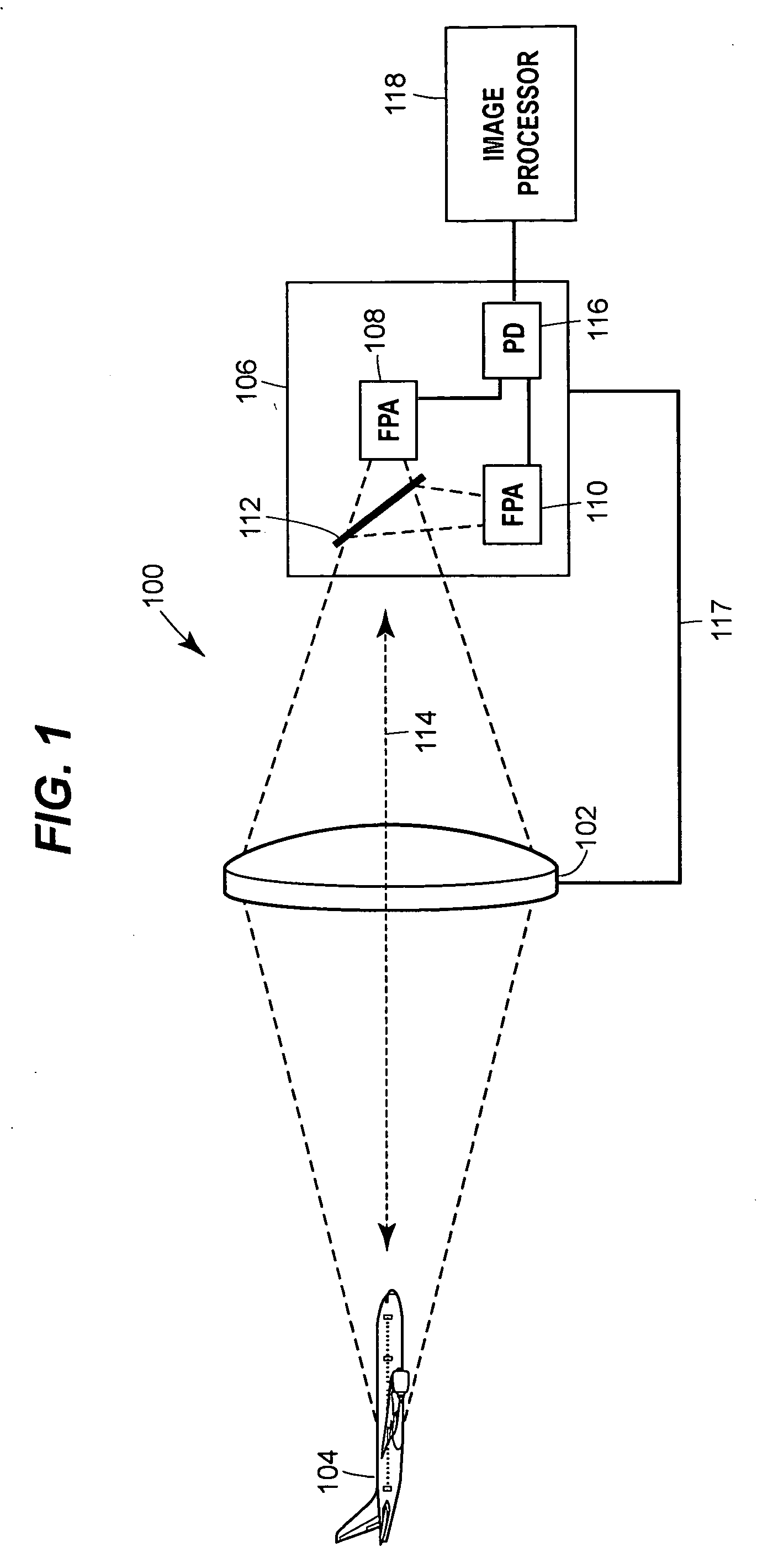Closed-loop wavefront sensor using field programmable gate array
a gate array and wavefront sensor technology, applied in the field of sensor systems, can solve the problems of limited use of optical signals in these applications, the effect of the atmosphere on optical signals, and the effect of twinkling or blurring
- Summary
- Abstract
- Description
- Claims
- Application Information
AI Technical Summary
Benefits of technology
Problems solved by technology
Method used
Image
Examples
example phase diversity
Formulation
[0032] By way of example, not limitation an example phase diversity computation technique will not be described. The diversity image equation id(x,y) at the image plane of an isoplanatic imaging system is given by:
id(x,y)=fdo{circle around (×)}hd(x,y)+nd(x,y) (1)
where o(x,y) is the pristine object absent wavefront aberrations, hd(x,y), the intensity point spread function (psf), {circle around (×)}, the convolution operator, nd(x,y), the independent and identically distributed (iid) noise process, and fd, the fraction of the average of total photocounts going to diversity sensor d with ∑dfd=1,
assuming no losses. In the case of two diversity images, the first diversity image i1(x, y) (in the example of FIG. 1, the “in-focus” image) and the first psf h1(x, y) are denoted by i(x, y) and h(x, y), respectively. The second diversity image i2(x, y) (in the example of FIG. 1, the “out-of-focus” image) and the second psf h2(x, y) are denoted by id(x, y) and hd(x, y), and ar...
PUM
 Login to View More
Login to View More Abstract
Description
Claims
Application Information
 Login to View More
Login to View More - R&D
- Intellectual Property
- Life Sciences
- Materials
- Tech Scout
- Unparalleled Data Quality
- Higher Quality Content
- 60% Fewer Hallucinations
Browse by: Latest US Patents, China's latest patents, Technical Efficacy Thesaurus, Application Domain, Technology Topic, Popular Technical Reports.
© 2025 PatSnap. All rights reserved.Legal|Privacy policy|Modern Slavery Act Transparency Statement|Sitemap|About US| Contact US: help@patsnap.com



